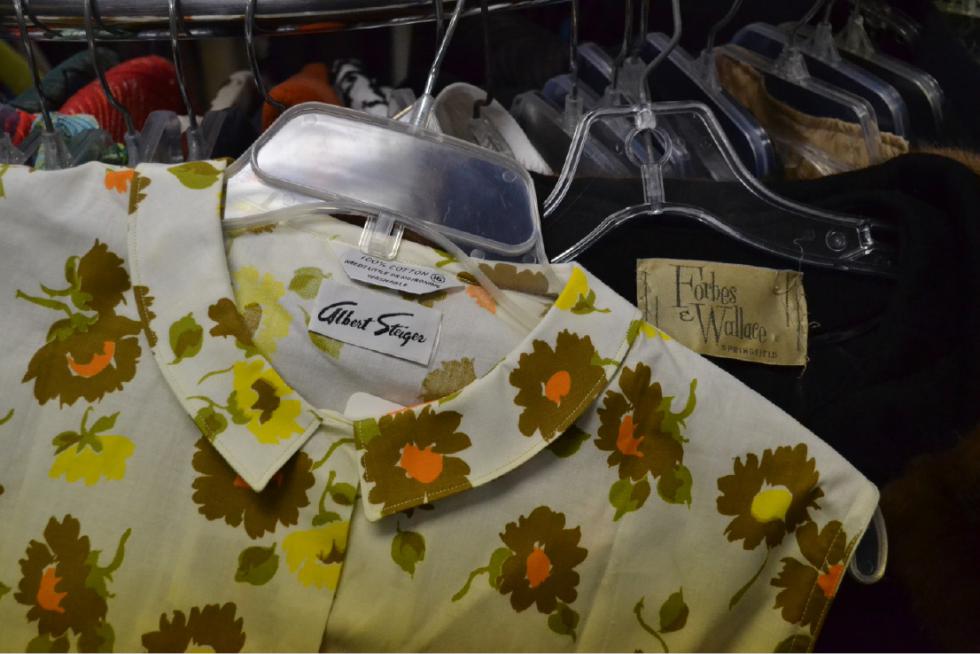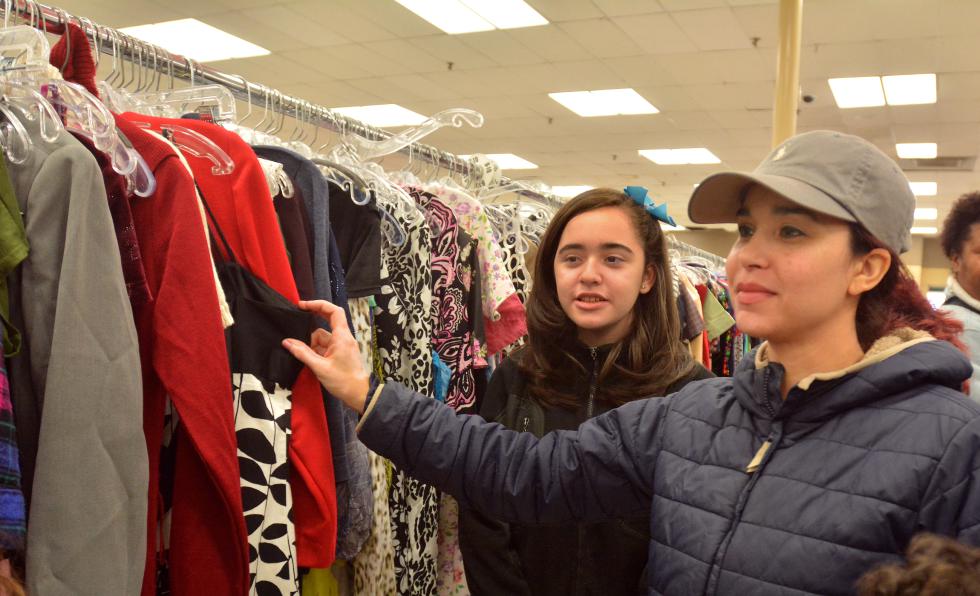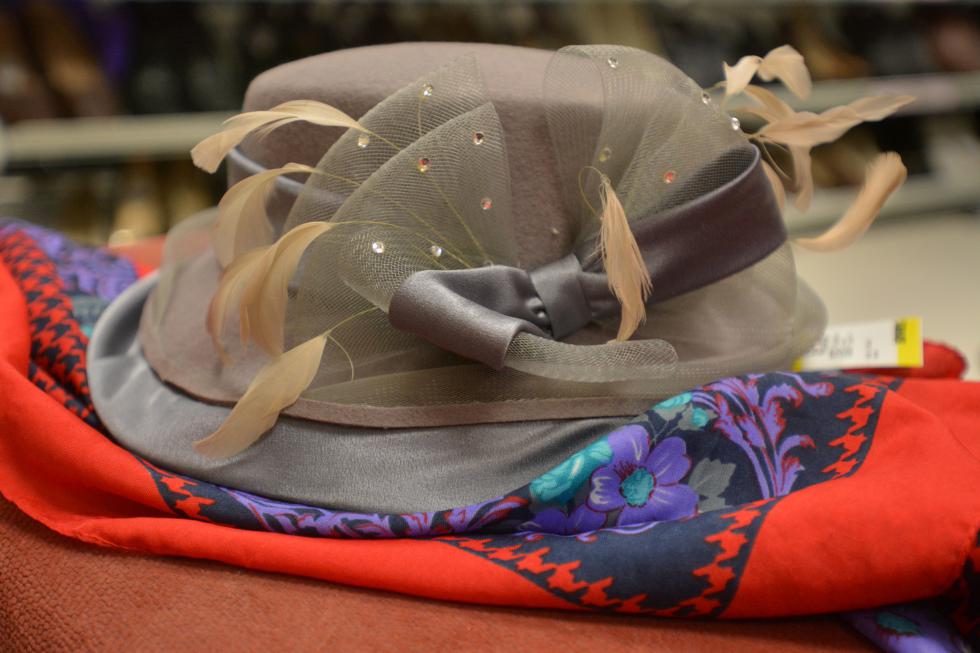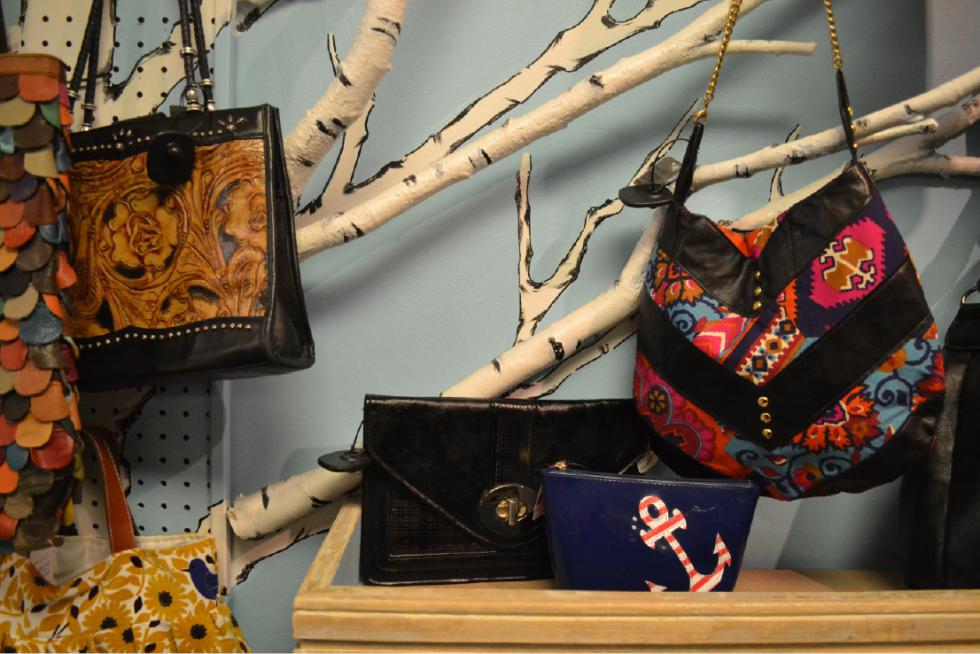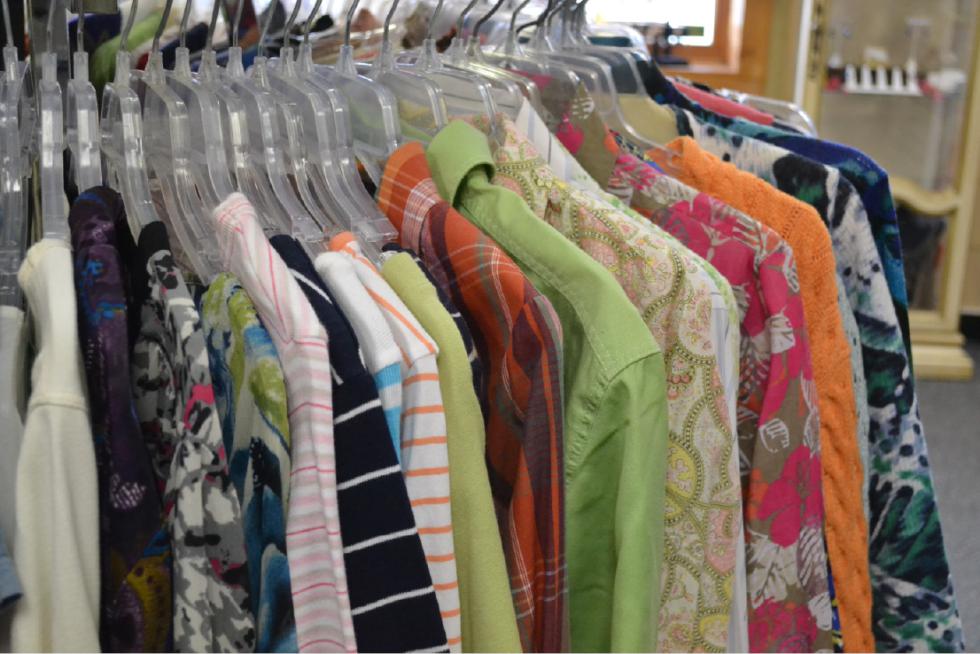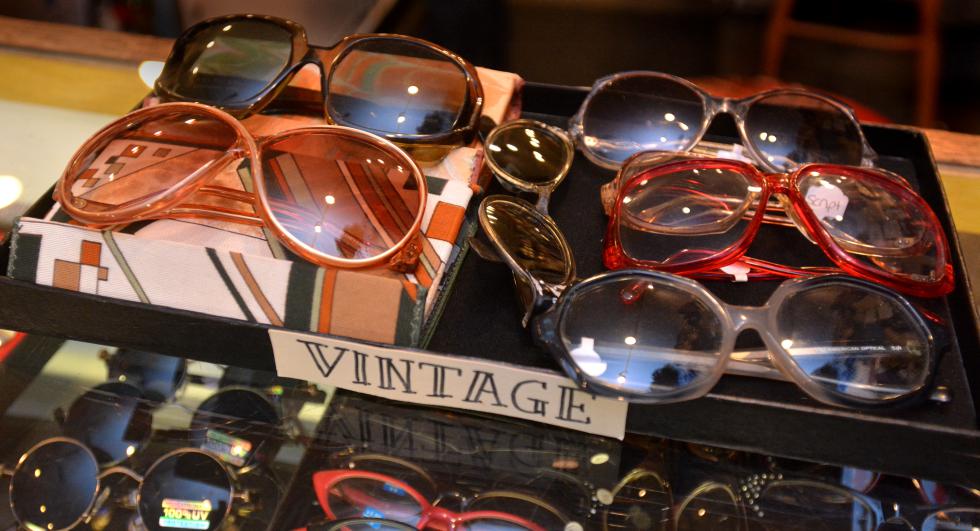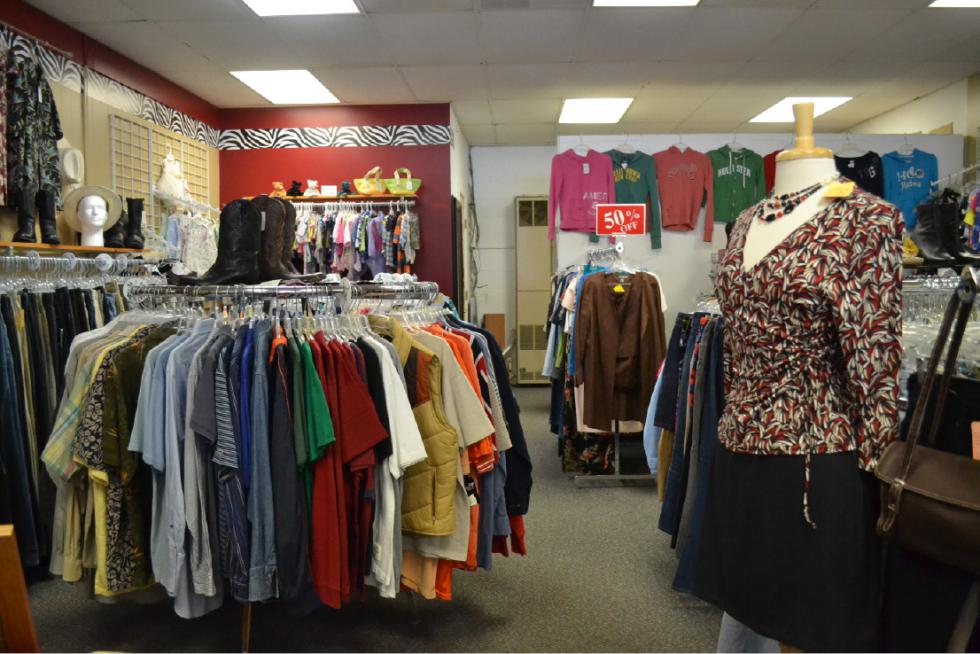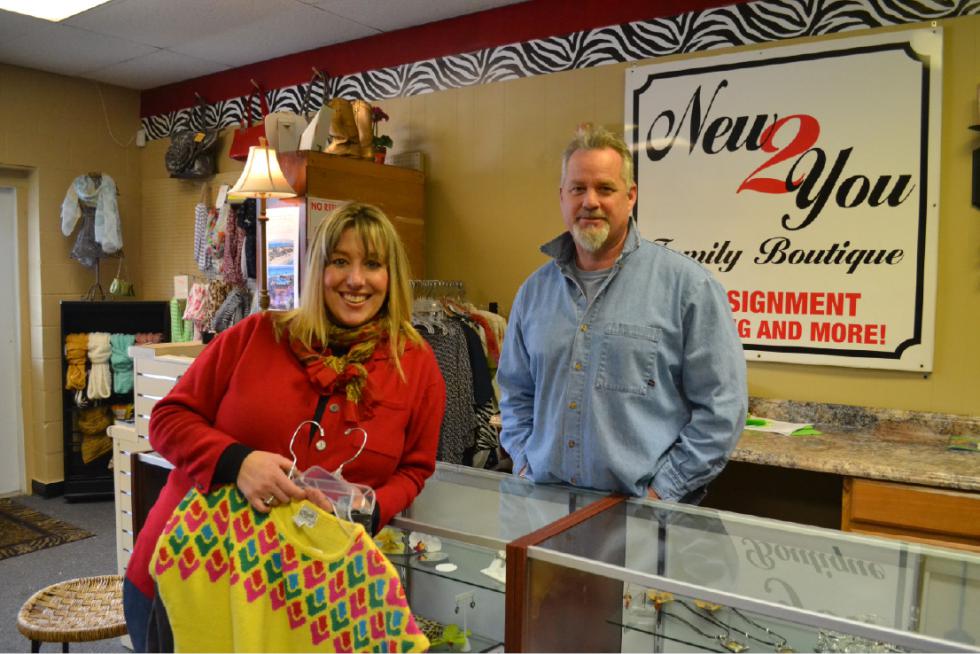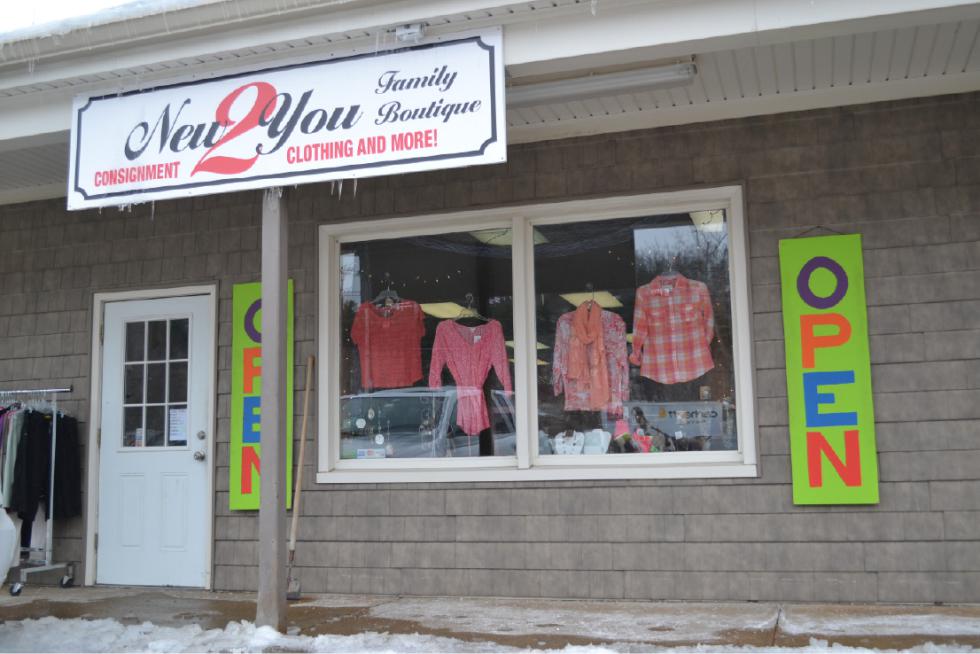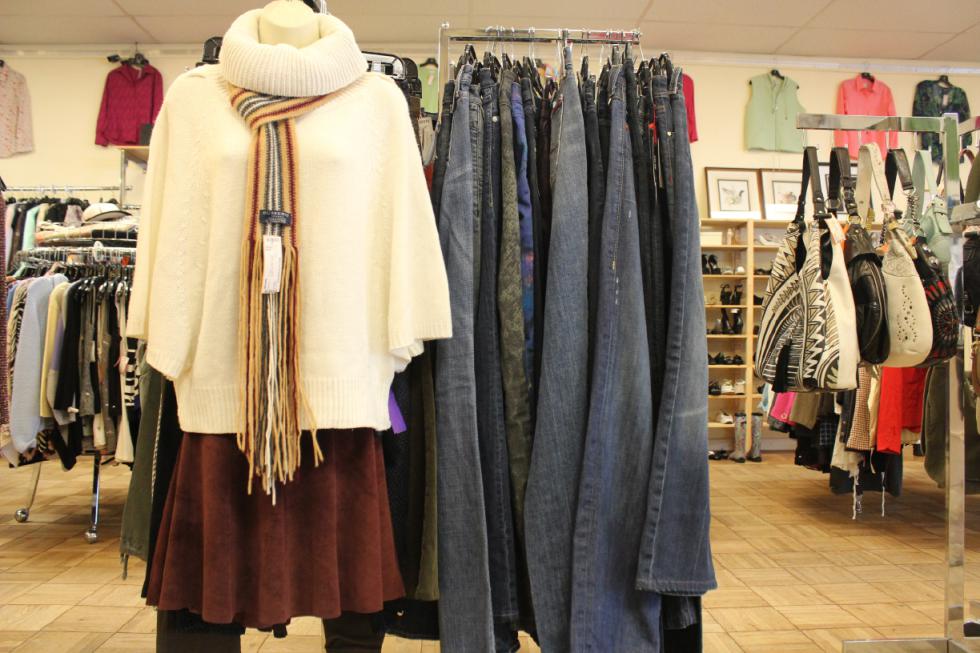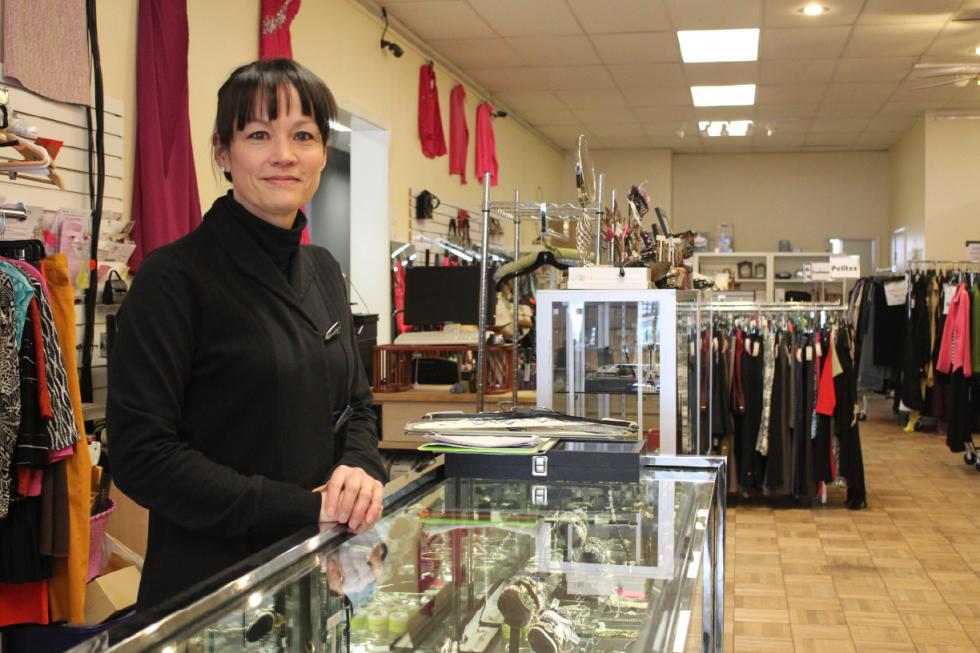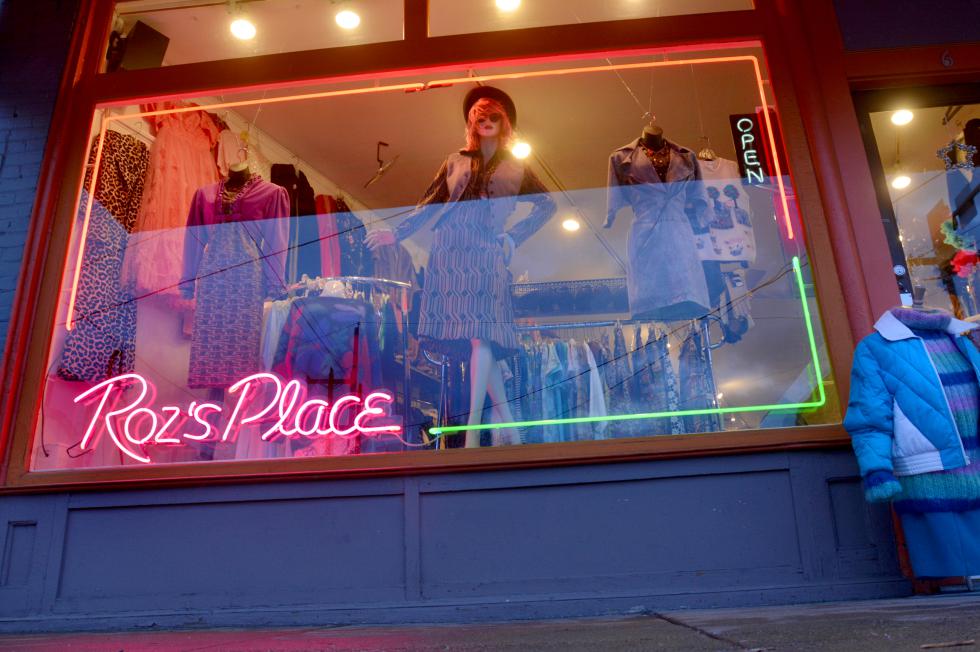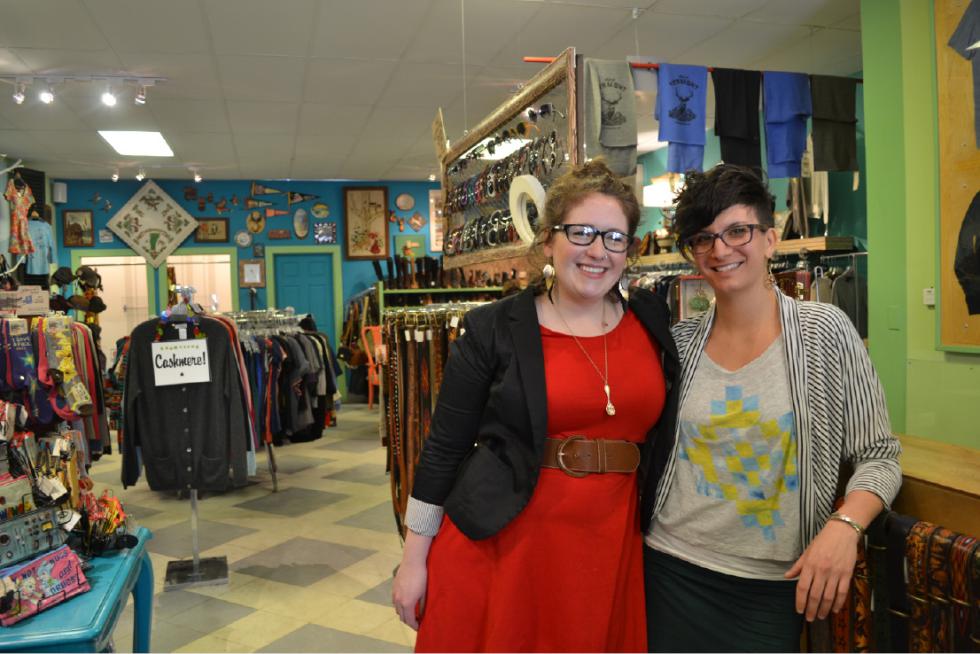I had a friend in high school who refused to let Mother Nature be the boss of his wardrobe. Matt sported jean shorts into December, refused to wear anything sturdier on his feet than sneakers, and didn’t like how he looked in hats.
Warmth is a state of mind, he would say — one that can apparently transcend snow, sleet, mud, and biting wind.
Taking a page from the Book of Matt, this week the Advocate is featuring articles dedicated to spring style despite the fact that you probably had to slog through a rock-hard, slippery snowbank to get this paper from a newsstand (thank you!).
For this edition, staff writers went picking through vintage and thrift shops in search of warm-weather looks that exude a personal style the mall can’t touch. We stopped people on the street to talk fashion. We took shameless selfies. In short: We’re pumped for spring. Now, let’s see what we can do with you — a nice seersucker perhaps? I know just the place where you can find that.
Savers
Liberty Street, Springfield
Antonio Johnson, 57, of Springfield, loves to thrift shop, and his favorite place is Savers on Liberty Street in Springfield. “They’re good clothes,” he says of the aisles and aisles of secondhand togs. “Some of it has a strong basement smell, but most of the time it comes out.”
One of the best things about thrift shopping, Johnson says, is pretty obvious — the price. Suits for a Jackson, T-shirts for under a buck. You can put together an entire outfit for $20. It allows people who love fashion, but are a little light on cash to buy expensive, awesome, funky, and occasionally outright hideous used clothes — lots of them.
“I’m a clothes fanatic,” Johnson says. “I have no room in my house because of clothes. But at these prices, you can afford to do that.”
He may not like to pay top dollar, but his standards are high. He says he recently paid $20 for a pin-striped suit that makes him “look like a thousand bucks.”
“I don’t like the sisters,” he jokes. “Poly and Ester — we don’t speak.”
The checkout line at Savers is backed up. It’s Tuesday, and manager Glenn Walulack says it’s busy because all winter items are 50 percent off. “We have a lot of regulars,” he adds.
Sally Wilson, 56, of Brimfield, strolls an aisle, one hand heavy with finds and the other parsing items on a packed rack. “I’m shopping for what’s on sale or whatever I see that catches my eye,” she says.
“Everything I’m wearing I bought here or at Goodwill,” she adds.
And she sure looks put together. She has to be, she says, or she gets scolded by her fashionista daughter. “She’s very fashion conscious,” Wilson says. “She yells at me if I get the wrong thing. I love skinny jeans now.”
She says people are surprised when she tells them her new items are secondhand, but she wouldn’t have it any other way. “These days people throw away their clothes as fast as they get them,” she says.
Carly Myers, 25, of Easthampton, sifts through sweaters, looking to add to her collection. “I’m able to because I shop at thrift stores,” says Myers. “You really have to sort through it, but there’s good stuff. The thrill is in the hunt, right?”
New 2 You
Amherst Road, Sunderland
Sunderland’s a small town, and store owners Julie and Rick Strong have come to peace with that. “We’re out here in a corn field, basically,” he says.
New 2 You is in a shopping plaza on Amherst Road, alongside Dunkin’ Donuts and The Spirit Shoppe, and a large portion of their clientele is from town. Julie appreciates that.
“We’ve gotten to know the tastes of our customers. After five years, I can take in an item and know who’s going to buy it.” That’s why the Strongs have dubbed New 2 You a family boutique. College kids wander up from UMass in search of vintage, but more often this consignment shop caters to parents, young children, and retirees.
Aside from a few small touches by the funky boutique fairy, like the broad stripe of zebra print wallpaper that runs behind the cash register, this is a pretty down-to-earth operation, leaning more toward Nike basketball sneakers, sports T-shirts, and American Eagle sweatshirts. A few vintage treasures glint in the racks, like a ’50s fur coat from the Springfield-based company Forbes & Wallace, but the gist here is affordability and condition, not designer style.
“We’re in the business of recycling,” says Julie. “We want people to spruce up their wardrobes — and get rid of things — in a way that’s green.” And they wanted to do it in a small, welcoming space, Rick says. “We’re not a big old thrift shop, where the racks are 50 feet long and you feel exhausted before you’ve made it halfway through.”
At New 2 You, the only vintage items are in perfect condition: stain-free and unfaded. It’s not an easy policy to keep with clothing that’s more than 20 years old, which is why vintage makes up such a small part of the store.
But there are a handful of unique items here. Julie pulls a beige, puffy, down-filled outdoor jacket from a rack. “This is vintage from Sears. Never worn. Feel how crisp it is. But it’s 40 years old!”
She pulls a flowery ’60s women’s shirt made by Albert Steiger. That brand — made for a regional department store with locations in Springfield and Holyoke that closed in the late ’80s — is a throwback to a time of Valley clothiers, a local industry that has all but disappeared over the past few decades.
Sorting through secondhand clothes sparks personal memories every day, Julie says. And the work is especially fun over the past few years, now that the ’80s have solidly entered the vintage realm. “It’s all the rage right now,” she says. “But at first it was difficult for me. I couldn’t wrap my head around the idea that the pants I wore in high school would ever be cool.”
Mimi’s Consignment Boutique
Shaker Road, East Longmeadow
I walk into Mimi’s Consignment Boutique and I am instantly tempted to grab items off the rack. A pair of gold sandals strikes my fancy, but a glance at the price tag sends me along.
The shop is small, intimate and well-organized. A row of ceiling fans cast a warm, orange-tinted glow. Pre-arranged outfits hang artfully at the end of each clothes rack. The prom dress section explodes with fluffy, glittered tufts that cannot be contained by a mere sales rack.
Many of the clothes at Mimi’s look as though they have never been worn. Designer bags line the shelves behind the front counter. They’re always a quick turnover, says owner Cindy Wall. She says customers have already begun shopping for spring, either to get ready for a vacation or push the seasons along.
“People are hopeful,” she says laughing. “Plus, people go on vacation this time of year.”
“I got some spring outfits here the other day,” says customer Jennifer McCarthy, of South Hadley, as she stands at the register making a purchase. On this day, she’s buying a handbag and some jewelry.
“I come a long way to see her. She taunts me!” McCarthy adds giving Wall the eye.
Wall laughs from behind the counter.
“She emails me pictures and says, ‘Hey, got this in today.’”
“I can’t lie to ya,” McCarthy says, “I don’t even like to tell people about this place, because they’ll come and steal my stuff.”
Wall is a fan of thrift store shopping and opened Mimi’s 10 years ago. She says thrift and consignment shops can offer more variety than department stores because the inventory is always changing according to what people bring in to sell.
As we talk, a woman with a load of clothes so weighty it looks difficult for her to manage walks in looking to sell. She sets it all down on the counter and breathes out heavily. Wall sifts through the items. She turns down more clothing and accessories than she takes. “This one’s too dated,” Wall says to the woman about a pale pink dress. “And bring this one back during the holidays,” she says, pulling out a forest green dress with gold flecks.
“It’s a hard thing to explain,” Wall says of her choosing process. “After 10 years, you just know.”
Wall says that thrift store vintage is different than consignment vintage. She explains that she does a lot of the “weeding out,” whereas in many thrift stores nearly everything that comes in hits the racks.
“Most of the people who shop here don’t do it because they need to — they do it because it’s fun,” says Wall.
“I like consignment shopping — you never know what you’re going to get.”
Roz’s Place
Bridge Street, Northampton
The Bridge Street property that Roz’s Place has occupied since 1980 is narrow, cozy, and deeper than it looks. As a shopper, you can’t just glide airily through this vintage shop. To find the best pieces, you have to plow directly into its center as if it were C.S. Lewis’ magical wardrobe and get lost in the colorful world inside.
This Narnia is packed full of more than half a century of clothing. Racks are densely grouped. Vibrant colors and bold patterns are scrambled together. Standing inside, so thickly surrounded by fashion, feels like exploring the backstage dressing room for a Broadway show about time travel.
Costume pieces stand out, like the top hats and bright pink wigs, but there is just as much flux in the rest of the stock: everything from Hawaiian shirts and swimsuits to lingerie and silk nightgowns.
Denise Miner owns the store with her partner Timothy Saldo. She walks me through the racks to show me what Roz’s Place sells during the winter: mostly leather jackets and knit sweaters from the ’80s. Once it’s warmer, she says, shoppers will stop in looking for skirts, dresses, and jewelry to wear for themed parties and weddings. The Roaring ’20s are big right now, she says.
The store has also been selling a lot of ’90s-style dresses, she says — baby dolls, rompers and long, flowy numbers. She pulls one from the rack. It’s brightly colored, long and replete with shoulder pads. It may not feel like the ’90s was 20 years ago — making it vintage, by Miner’s definition — but those shoulder pads make a pretty solid case for the passage of time.
“People are starting to get comfortable with this again,” she says, holding the dress. “They used to feel intimidated by the shoulder pads and puffy sleeves. But you have to train your eye to accept things. If you accept your outfit, it works.”
Miner says that in the world of designer fashion, bigger sleeves are making a comeback. “Trends come around in strange ways. You can’t completely predict what people are going to buy, but you can guesstimate. As a business owner and buyer, I can’t be closed minded when I go to wholesalers. I have to try things. And I can pass that attitude on to the customer.”
It’s starting to feel like I’m at Central Perk.
Nearby, a woman is standing perplexed in front of a wall of skirts. “I’m just desperate to find a costume for my daughter’s play,” she says.
“Is this for Hairspray?” Miner asks. Amherst Regional High is producing the musical this week, and Miner has been getting requests for help from parents looking for something ’60s and kitschy.
The woman nods. “I need a ’60s skirt. I have no idea.”
Miner leads the woman through some options. “They’ll want color,” Miner says. “That much I know. They won’t want black-and-white.”
They scan some options, checking waist sizes. The mother frowns, “I wouldn’t wear that.”
“Yeah, it’s different,” Miner says. “I know it’s foreign, but this is definitely ’60s.”
While they explore, I browse some items that are newly made but look vintage — wigs, cigarette cases, pocket watches, cardholders, flasks, sunglasses — as well as some nice worn blazers, sweaters, and rock ’n’ roll T-shirts. I consider a bright red paisley necktie. I don’t consider the men’s flannel onesie pajamas covered in penguins.
I look toward the back of the store, past the mannequin heads wearing sombreros, berets, and leopard pillboxes, and I see Miner offering up an armful of skirts. “Try these on,” she says. “I think these will work.”
Boomerang
Elliot Street, Brattleboro
Brattleboro is frozen solid, but the fake deer head mounted to the wall inside Boomerang is wearing sunglasses. That’s the vibe in here: bright, warm, and endearingly quirky.
The walls are painted lime and turquoise. The shelves are full of crafty art (some for sale), and cascades of colorful accessories — bags, belts, sunglasses, socks — enliven the spaces between racks.
It’s early in the morning mid-week, so the store is empty, which gives managers Jessica Southard and Elizabeth Hallett time to pull inventory. Boomerang is a consignment shop which receives items from a network of friends and partners on two-month loan. If an item sells, the consignor gets 40 percent of the profits. If it doesn’t, it’s either returned to the consignor or donated to charity.
“We want fashion-forward stuff, no matter what decade it’s from,” says Southard. She gestures to a bright red button-up men’s shirt on a mannequin with a yellow tag indicating the decade in which the clothes were made.
Boomerang’s stock goes back to the 1940s. Their ’80s items are marked “brand new.” Shoppers love vintage, Southard says, because the fashion industry has focused on many female body types over the years.
“Dresses from certain decades fit us so much better,” says Southard. “It’s interesting to help a customer figure out which decade fits them.”
Clothing runs small at the mall where stores cater to the young and lithe. “If someone is frustrated with that process, we can usually find them something here. Vintage dresses support curves,” Hallett says.
But most of the fun, they agree, is in watching how the generations mix and match from Boomerang’s selection of new, used, and vintage. When Hallett started here seven years ago, shoppers were buying lots of alternative ’80s looks: punk cuts, torn hems, and neons. But over the past year or two, interest has turned to items from the ’40s, ’50s, and ’60s. “And lots of mixing genres,” Hallett says. “Like, a really cute vintage dress paired with a blazer or a motorcycle jacket.”
These days at Boomerang, flairs and bootcut jeans don’t sell — only skinny jeans. Buffalo plaid wool shirts for men are popular, especially in the winter, as are pieces from their selection of locally-made jewelry and handmade belts. Graphic tees with animal and nature prints remain bestsellers.
Southard and Hallett see vintage as a kind of natural resource that needs to be preserved and they’re happy to do their part.
“These clothes are like oil reserves. They can run out. You can’t just turn things vintage — it takes time,” Southard says. “You’re not going to get any more dresses that were made in the ’50s.”•

